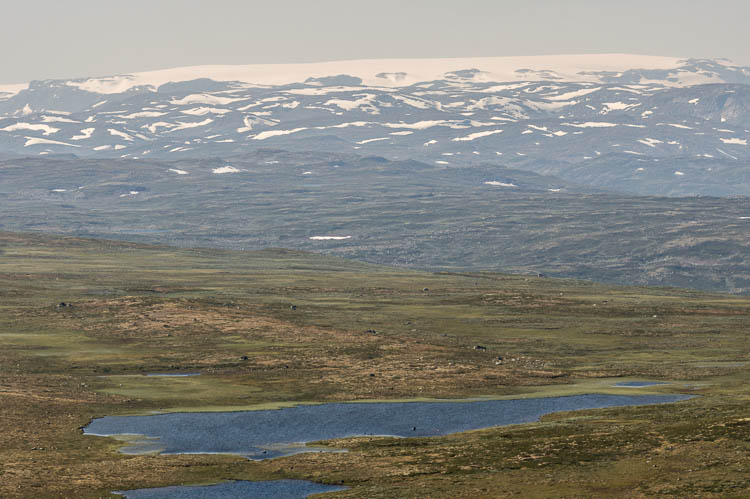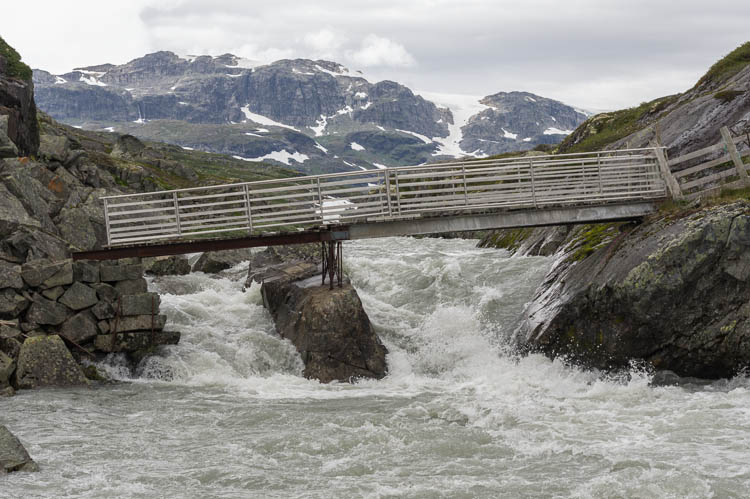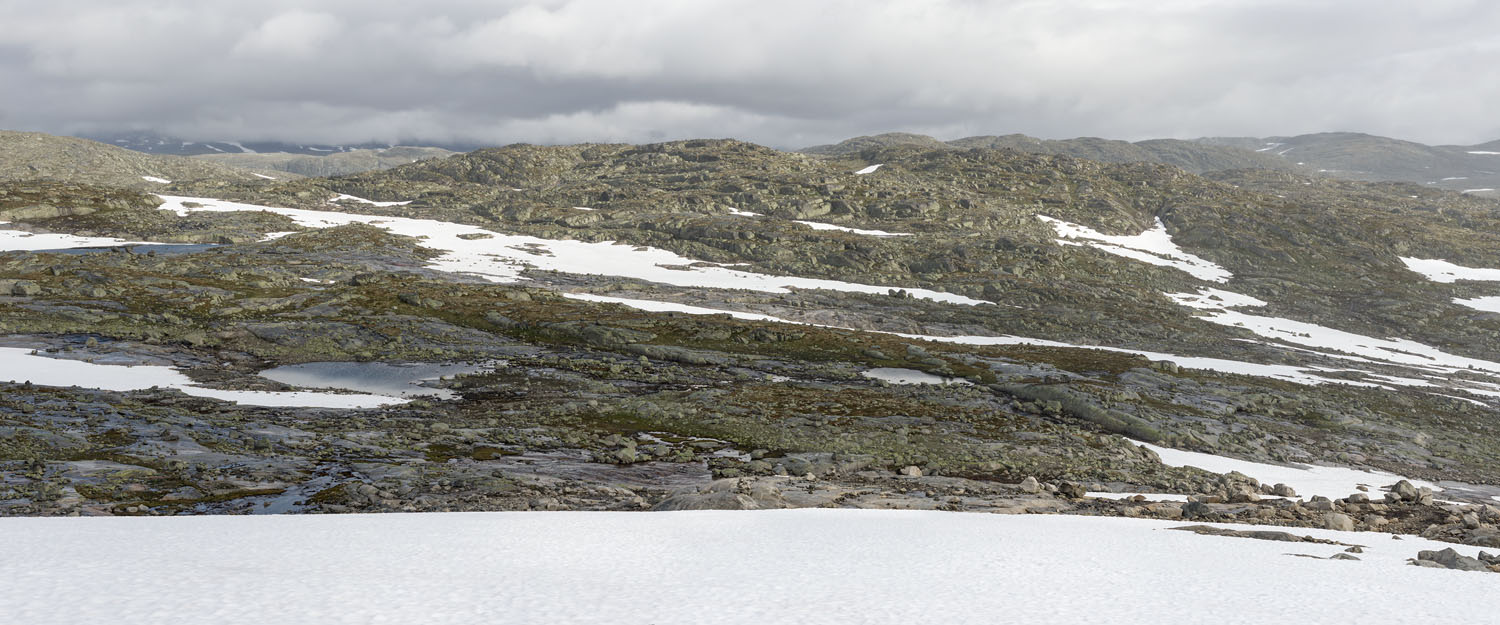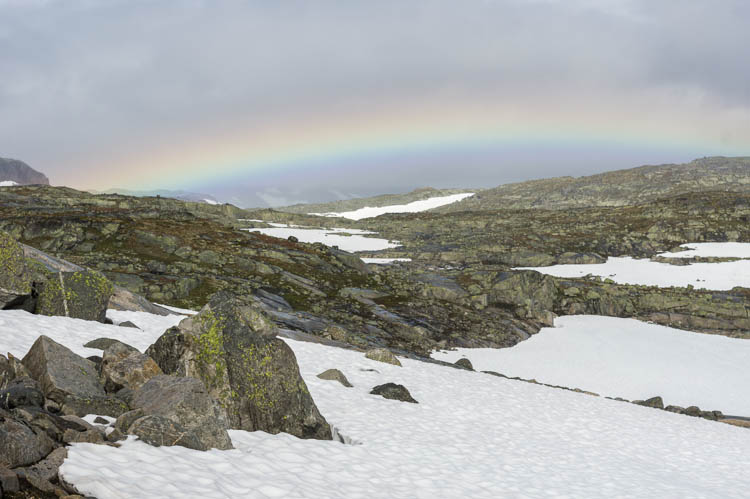Start
A good way to start from the north is to go from Oslo with the Bergensbanen, the railway from Oslo to Bergen completed in 1909. We exited the train in the settlement of Ustaoset, went around the eastern end of the Ustevatnet and then up into Hardangervidda.Lookout
From our first little summit, the Ustetind (1376 m), we get a first glimpse of the Hardanger glacier across the not so spectacular eastern part of Hardangervidda.

























